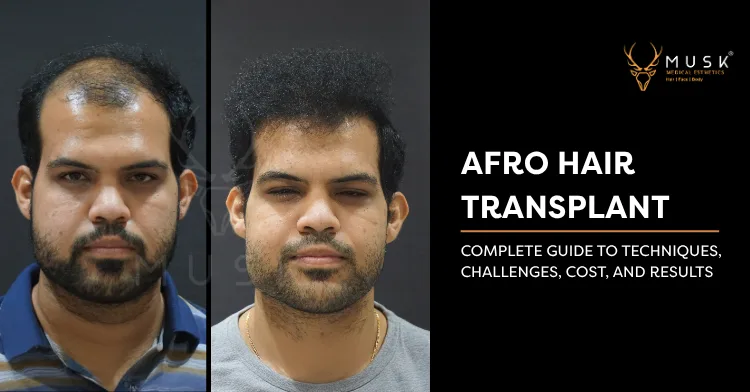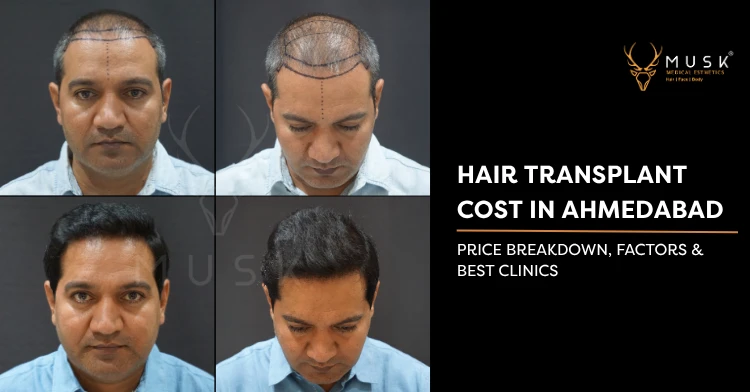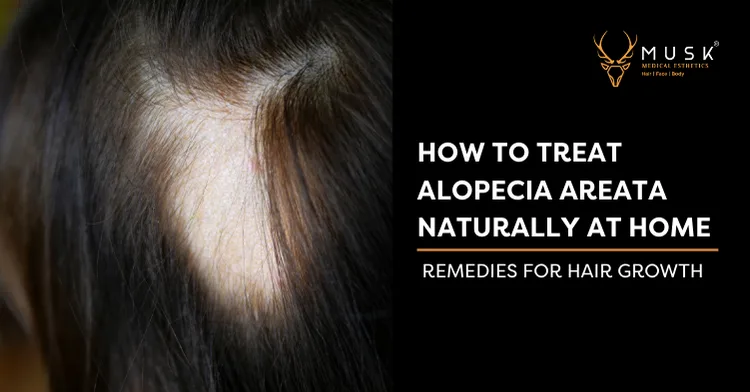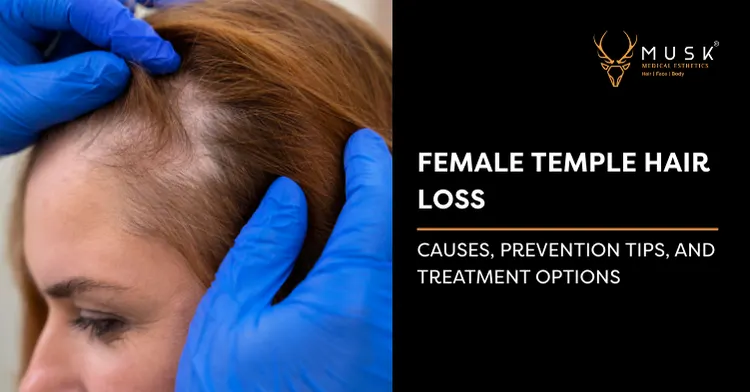Afro Hair Transplant The Complete 2025 Guide to Techniques, Challenges, Cost, and Results

Hair loss can be a distressing experience for anyone, but for individuals with Afro-textured hair, the journey to restoration has unique considerations. The good news? A successful, natural-looking hair transplant is absolutely achievable. With advanced techniques and a deep understanding of the specific characteristics of coily and curly hair, you can regain not just your hairline, but your confidence, too.
At Musk Clinic, we specialize in providing world-class hair restoration services for all hair types. We understand that an Afro hair transplant is a highly specialized procedure that demands a unique blend of artistry and surgical precision. Led by the internationally trained Dr. Anand B. Shah, our team is equipped with the advanced technology and expertise required to navigate the complexities of Afro-textured hair, ensuring results that are both beautiful and life-changing.
What Makes an Afro Hair Transplant Different?
An Afro hair transplant is a surgical procedure designed to restore hair in areas of thinning or balding, specifically for individuals with tightly curled or coily hair, often referred to as Type 4 hair. While the fundamental principle of relocating healthy hair follicles to balding areas is the same as any other transplant, the execution is far more complex due to the unique structure of the hair itself.
The primary difference lies beneath the skin. An Afro hair follicle has a distinct C-shape or S-shape curve that extends from the bulb (the root) all the way to the tip of the hair strand. This curvature makes extracting the follicle without damaging it a significant challenge. A surgeon requires specialized tools and a deep understanding of this unique anatomy to ensure the graft is kept intact and healthy for transplantation.
Are You a Good Candidate for an Afro Hair Transplant?
Determining your candidacy is the first and most crucial step in the hair transplant journey. A thorough consultation with a specialist will provide a definitive answer, but generally, a good candidate meets the following criteria:
- Sufficient Donor Hair: You must have a stable supply of healthy hair follicles at the back and sides of your head. This "donor area" provides the grafts for the transplant.
- Cause of Hair Loss: The most common and treatable cause is androgenetic alopecia (male or female pattern baldness). However, traction alopecia, a type of hair loss common in the African American community due to tight hairstyles, is also a prime reason for seeking a transplant.
- Realistic Expectations: Understanding the process, the recovery timeline, and the final outcome is key. A hair transplant creates a remarkable improvement, not a miracle. A skilled surgeon will help you understand what's possible for your unique situation.
- Good Overall Health: Being in good health ensures you can undergo the procedure safely and heal properly.
Which Hair Transplant Technique Is Best for Afro Hair?
The choice of technique is critical for a successful outcome. The two primary methods used in modern hair restoration are Follicular Unit Extraction (FUE) and Follicular Unit Transplantation (FUT).
1. Follicular Unit Extraction (FUE): The Preferred Method
FUE is often considered the gold standard for Afro hair transplants. In this method, individual follicular units (groups of 1-4 hairs) are extracted one by one from the donor area using a specialized punch tool. This minimally invasive technique is highly favored for several reasons:
- No Linear Scar: FUE avoids the long, linear scar associated with the FUT method. This is a significant advantage for individuals who prefer to wear their hair short, as there are no visible signs of a procedure.
- Faster Recovery: Because there is no large incision, the recovery time is quicker, with less discomfort. The tiny extraction sites heal within a few days.
- Reduced Risk of Keloids: Individuals with darker skin tones have a higher predisposition to developing keloid scars (raised, overgrown scars). The FUE method, with its tiny punctures, significantly minimizes this risk compared to the strip surgery of FUT.
However, performing FUE on Afro-textured hair requires immense skill. The curved nature of the follicle means the surgeon must use a larger punch or a specialized tool and adjust their technique to avoid transection (damaging the graft).
2. Follicular Unit Transplantation (FUT) or "Strip" Method
In the Follicular Unit Transplantation (FUT) method, a surgeon removes a small strip of tissue from the donor area. This strip is then dissected under a microscope by a team of technicians to separate the individual follicular units. These units are then implanted into the recipient area.
While FUT can sometimes yield a higher number of grafts in a single session, its main drawback is the linear scar it leaves behind. This can be a significant concern for many patients. However, for individuals who require a large number of grafts and do not plan on wearing their hair very short, FUT can still be a viable option.
What Are the Unique Challenges of an Afro Hair Transplant?
Successfully performing an Afro hair transplant requires a surgeon to overcome several distinct challenges that are not present with straight or wavy hair types.
1. The Curved Follicle
This is the most significant hurdle. The "C" shape of the hair follicle beneath the scalp makes it extremely difficult to extract without damage. An inexperienced surgeon may have a high transection rate, meaning many of the extracted grafts will not be viable for transplantation. This is why it's crucial to choose a surgeon with proven experience in Afro hair.
2. The Risk of Keloid Scarring
Melanin-rich skin has a higher tendency to form keloid scars. A skilled surgeon mitigates this risk by using the FUE technique, which creates minimal trauma to the skin. They will also take a detailed medical history to assess your personal risk factors.
3. Designing a Natural Hairline
A natural hairline is not a straight line. For individuals of African descent, hairlines are typically lower, straighter, and have softer, less defined edges. An artistic surgeon understands these nuances and will create a hairline that frames your face naturally and is appropriate for your age and features. They will avoid creating a harsh, artificial line.
4. The Illusion of Density
One of the wonderful advantages of Afro-textured hair is that its curly nature provides excellent coverage. The hair coils and expands, creating a natural volume that can make a transplant look fuller with fewer grafts compared to straight hair. A surgeon can leverage this characteristic to achieve a dense-looking result even if the follicular density is technically lower.
Your Hair Transplant Journey: A Step-by-Step Guide
Step 1: The Initial Consultation
This is where your journey begins. You will meet with a specialist who will assess your hair loss, examine your donor area, and discuss your goals. This is your opportunity to ask questions and ensure you feel comfortable and confident in the clinic and the surgeon.
Step 2: Pre-Operative Preparations
Once you decide to proceed, you'll receive a set of instructions to follow in the weeks and days leading up to your procedure. This may include stopping certain medications (like blood thinners), avoiding alcohol and smoking, and arranging for transportation on the day of the surgery.
Step 3: The Day of the Procedure
On the day of your transplant, you'll arrive at the clinic, where the team will make you comfortable. The procedure involves these key phases:
- Hairline Design: The surgeon will work with you to draw the final hairline design for your approval.
- Donor Area Preparation: The donor area at the back of your head will be trimmed short to allow for easy extraction of the follicles.
- Local Anesthesia: The surgeon will administer local anesthesia to both the donor and recipient areas. The procedure itself is virtually painless.
- Graft Extraction: Using the chosen method (typically FUE), the surgeon will carefully extract the individual follicular units.
- Graft Implantation: The surgeon will then make tiny incisions in the recipient area that match the natural angle and direction of your hair growth. The extracted grafts are then carefully placed into these incisions.
The entire procedure can take anywhere from 4 to 8 hours, depending on the number of grafts. You will be able to take breaks, listen to music, or even watch a movie during the process.
Step 4: Post-Operative Care and Recovery
This phase is just as important as the surgery itself. You will be given detailed instructions on how to care for your scalp. This includes:
- Sleeping: You'll need to sleep with your head elevated for the first few nights to minimize swelling.
- Washing: You will be shown a gentle washing technique to keep the scalp clean without dislodging the new grafts.
- Activity: Strenuous activities and direct sun exposure should be avoided for a few weeks.
What Results Can You Expect, and When?
Patience is key after a hair transplant. The results are not immediate but are well worth the wait. Here is a typical timeline of what you can expect:
- First 2 Weeks: The newly transplanted hairs will form scabs and then shed. This is a completely normal part of the process known as "shock loss." Do not be alarmed; the healthy follicles are safe beneath the skin.
- 3-4 Months: You will begin to see the first signs of new hair growth. These hairs may be fine and thin at first, but they will gradually thicken over time.
- 6-9 Months: Significant growth and coverage will be noticeable. The new hair will continue to grow and mature, and you'll be able to style it.
- 12-18 Months: The final results will be fully visible. Your new hair will have grown to a considerable length, and the full density and texture will be apparent. The results are permanent, as the transplanted follicles are resistant to the hormone that causes balding.
How Much Does an Afro Hair Transplant Cost?
The cost of an Afro hair transplant is a significant investment in your confidence and appearance. The final price varies widely based on several key factors:
- Number of Grafts: This is the biggest factor. The extent of your hair loss will determine how many grafts are needed to achieve your desired coverage.
- Technique Used: FUE is generally more expensive than FUT because it is more time-consuming and requires more skill from the surgeon.
- Surgeon's Expertise: Highly experienced surgeons who specialize in Afro hair transplants will command higher fees. This is one area where you should not compromise—you are paying for safety and results.
- Geographic Location: The cost of living in the city where the clinic is located will also influence the price.
It is impossible to give an exact price without a consultation. Be wary of clinics that offer a one-size-fits-all price. A personalized quote ensures you are only paying for what you need.
Why Choosing the Right Surgeon Is Non-Negotiable
We cannot stress this enough: the single most important factor in the success of your Afro hair transplant is the skill and experience of your surgeon. An unqualified or inexperienced provider can lead to a number of devastating problems, including poor growth, an unnatural-looking hairline, visible scarring, and damage to your valuable donor area.
When choosing a clinic, look for:
- Specific Experience: Ask to see before-and-after photos of Afro hair transplant patients they have personally treated.
- Advanced Technology: Inquire about the tools they use. Do they use specialized FUE punches designed for curly hair? At Musk Clinic, we are proud to have been the first in India to introduce the ARTAS 9X Robotic Hair Transplant system, which aids in precision.
- Patient Testimonials: Read reviews and watch video testimonials from past patients with your hair type.
- A Surgeon-Led Consultation: Ensure you are meeting with the actual surgeon, not just a consultant. This allows you to build trust and ask critical questions about their approach.
The Musk Clinic Difference
At Musk Clinic, we believe that everyone deserves to feel confident in their appearance. Our commitment to excellence, combined with our state-of-the-art technology and the world-renowned expertise of Dr. Anand B. Shah, makes us a premier destination for Afro hair transplants. We don't just restore hair; we restore self-esteem.
Your journey to a fuller head of hair starts with a conversation. We invite you to book a consultation with us to explore your options and create a personalized treatment plan that will deliver the natural, lasting results you deserve.










